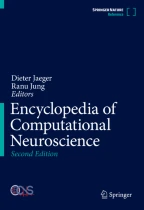
Auditory stream segregation is a fundamental process that allows us to segregate and focus on distinct sound streams (e.g., voices) in a dynamic noisy environment. Stream segregation has been widely studied with the auditory streaming paradigm, a relatively idealized stimulus for which two sequences of pure tones can be segregated in different streams. Our understanding – still far from complete – of this process is informed by a wealth of behavioral experiments, electrophysiology, brain imaging, and theoretical modelling. This review will highlight modelling efforts that have advanced our understanding of this important dynamical process.
Auditory scene analysis involves segregating a complex scene into objects or streams (recent reviews: Bendixen (2014) and Snyder and Elhilali (2017)). A valued paradigm involves segregating two interleaved sequences of A tones and B tones repeating in an ABA_ pattern and separable by a perceived difference in pure.